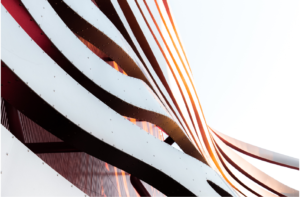Futurism is the accomplishment of today’s scientific and technical world. The style motivates designers to think out of the bounds with a whole new range of colors, expressions, and patterns. Humans are always curious to know or feel how our surroundings will be in the distant future and have tried to narrate the same though fiction, movies, writings, art, and architecture.
Your imaginations, visions might turn out to be wrong in the far future as it already has many numbers of times. People in the past have always imagined the world of 2020 to be full of robots, unrealistic heights, and appearances of the buildings which didn’t turn out to be as much of the reality. But that doesn’t mean one should stop fantasizing or thinking about making their dream come true. Futurism a way of presenting a hypothetical perspective that humanity might take in the future.
Trends in designing futuristic living spaces
Minimalism – the most basic characteristic of futurism is minimal designs. The surfaces are kept flat with no ornamentation, leading to a well-composed simple form.
Free geometry – the designers are free from the rules of symmetry, abandoning the square-based form of buildings. Architects are focused on new imaginative patterns with asymmetrical angles.
Fluidity – using unique forms and curves is another way to create a breathtaking structure. The characteristics of flowing rhythmic patterns is a new hype in interior and exterior works.

True surfaces – proper use of materials and the right selection of shapes that fuses well with the surroundings can help in the development of exposed architecture.
Bold neon colors – neon colors are used along with a subtle background like black, grey or white. It creates a futuristic look and adds contrast to the design.
Materials – metal chairs, sofas with tables made of glass, metal or plastic; fancy angular designs or running curves are the accent of futurist interior. Luminous paints are another example of enhancing the features in the design.
Technology in appliances – a number of multifunctional home appliances are installed with touch or voice controls of curtains, lights, cabinet doors, window shutters, etc.
Artificial lighting – high tech systems are emerging with touch sensors, LED systems, fiber cables, etc. Kinetic lighting is the best example of aesthetics in the technology of lighting.
Landscapes of future
Living gardens, green facades, roof gardens are all leading us to the future of landscaping in the entire world. Glowing gardens, light scaping are the modern characteristics added to the landscapes which will make you believe that you are living in a science fiction movie. Outdoor spaces like parks and gardens are designed with remarkable fluidity and curves that merge with the natural environment of the area. All the materials used need to be sustainable yet innovative, the most important concern of designing in architecture.

The phosphorescent coating can be used which charge at day time and glows at night time up to eight hours. This kind of material is an excellent choice for adding a starry glowing look to the gardens. There are biological microorganisms that emit shimmering lights because of the phenomenon called bioluminescence. Lighting luminaries with such technology would be a great addition to the growth of landscape designing.
Creation of futuristic spaces
Science fiction appeals to everyone, but in order to create such spaces, architects often forget the importance of requirements and sustainability.
- Functional spaces – always avoid elements that are merely decorative. There won’t be any space available in the future that could be wasted in the name of aesthetics. Ensure that the designs are functional and live up to the needs of the user.
- Eco-friendly – do not use an excess of artificial lighting. Prefer energy-efficient system for lighting and heating.
- Bright and light – futuristic designs are believed to be very white and bright. So, avoid leaving any dark corners.
- Openings – sometimes, windows and fenestrations are avoided in order to achieve sci-fi look. Always ensure your design gets natural ventilation and sunlight.
The architecture of the future holds far more spectacular things than one could imagine. Long dynamic forms, motion, rhythm are part of futuristic architecture which could result in a beautiful dream like living spaces.



